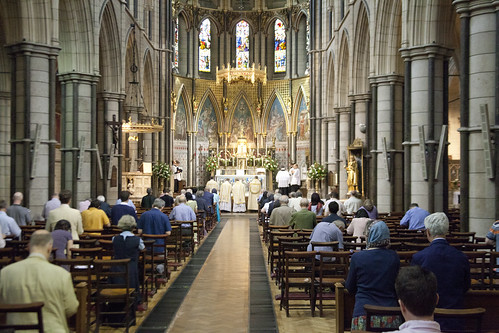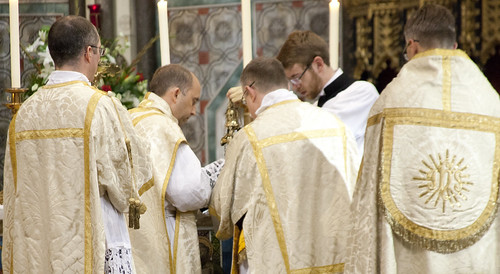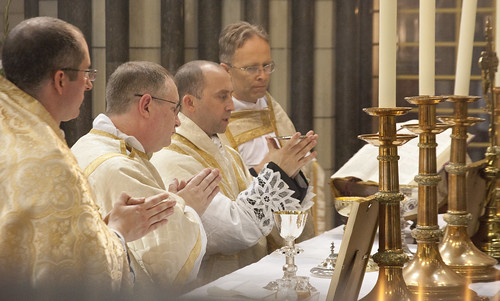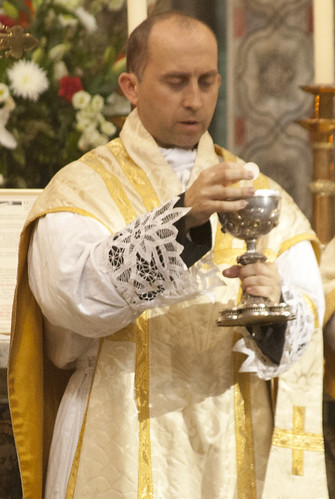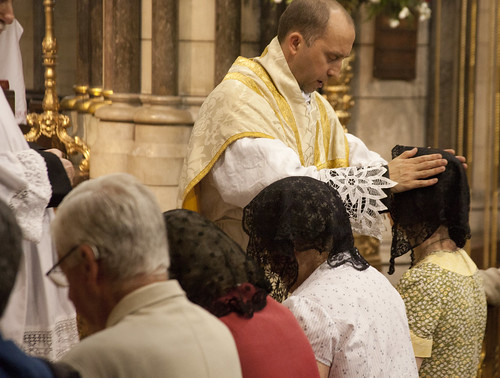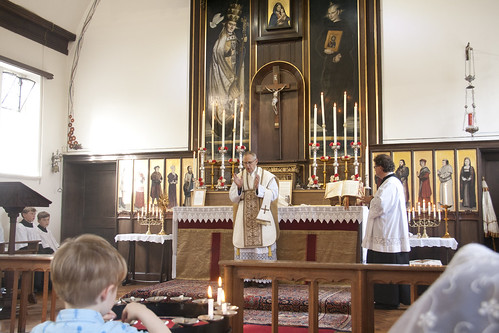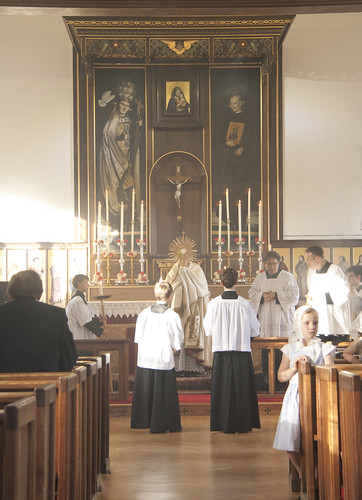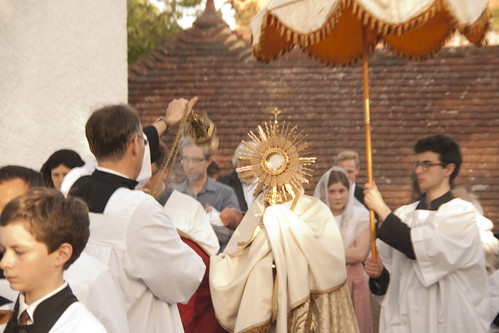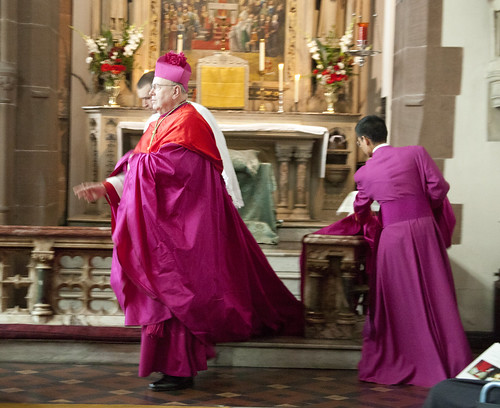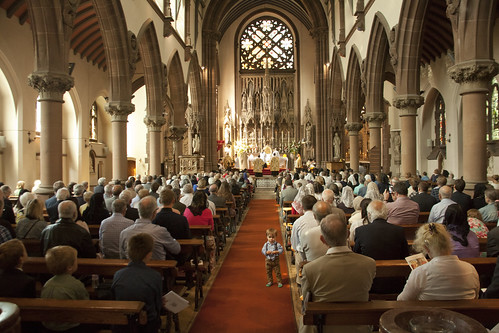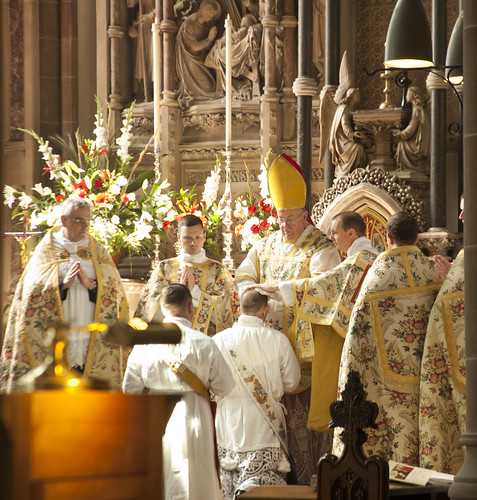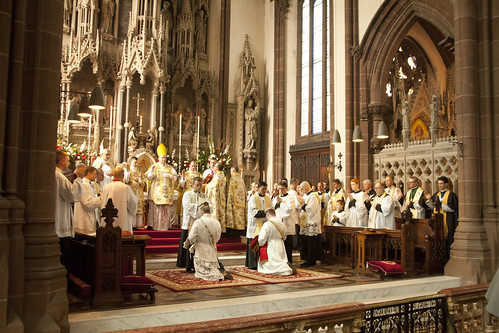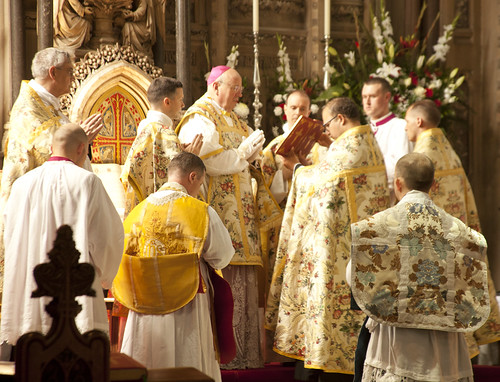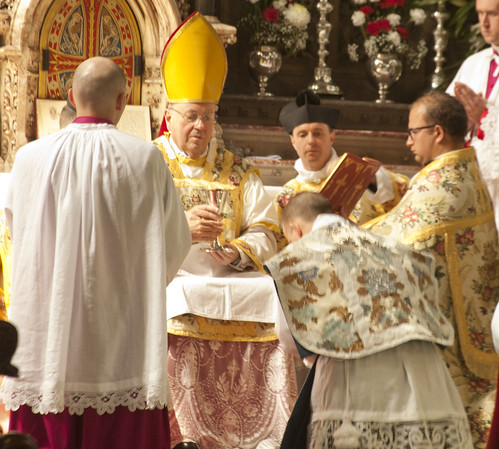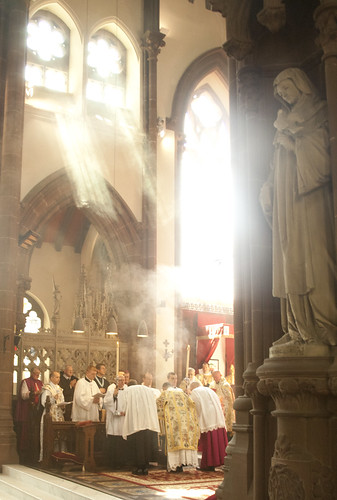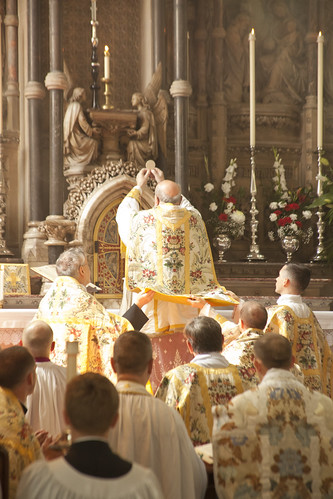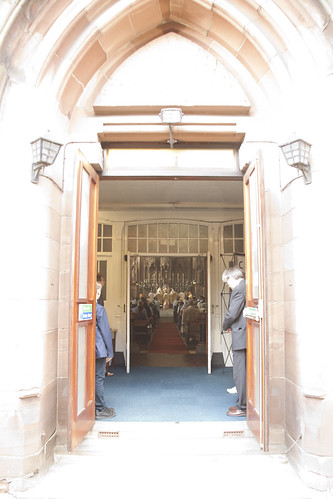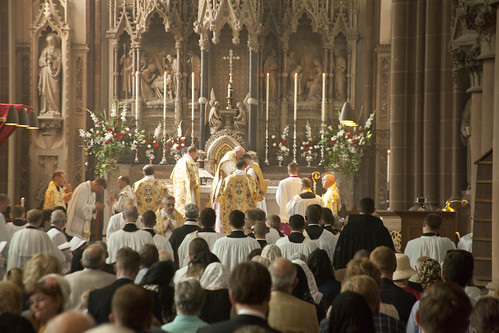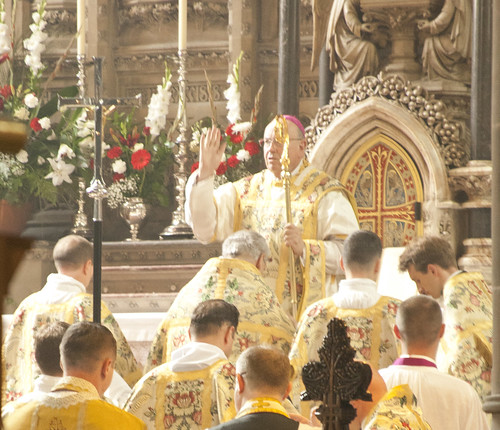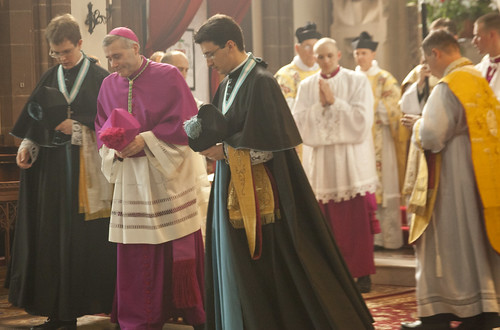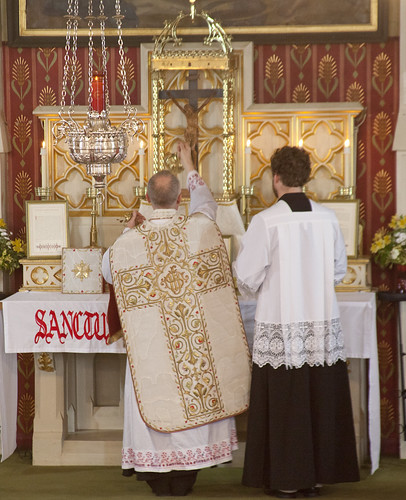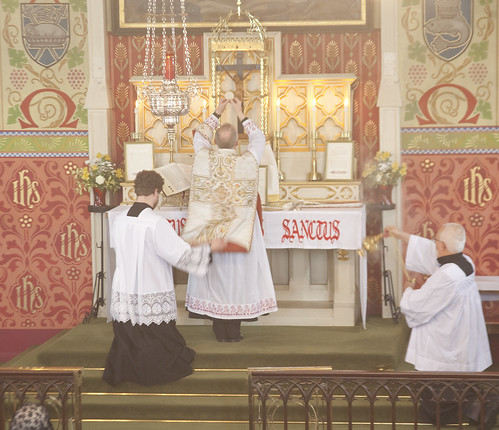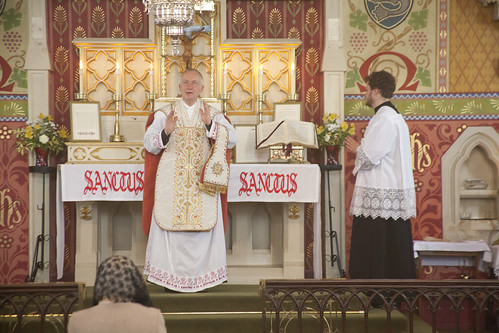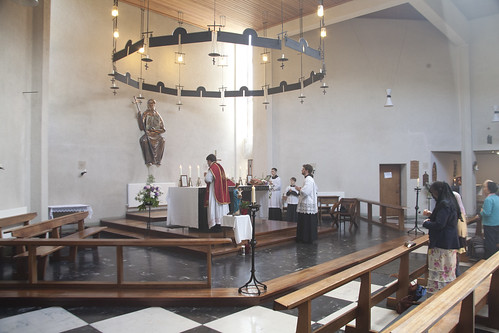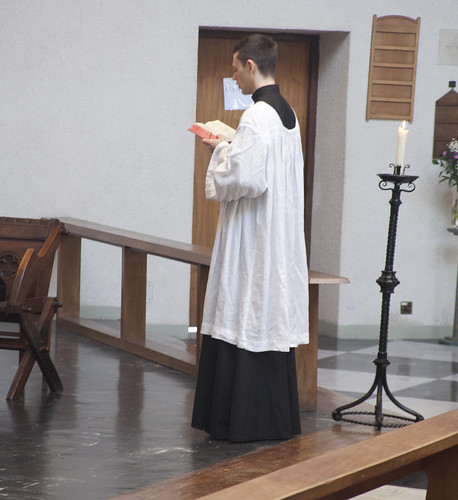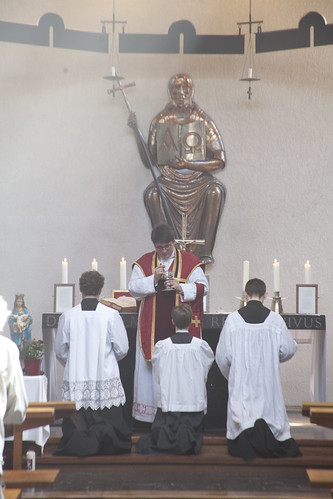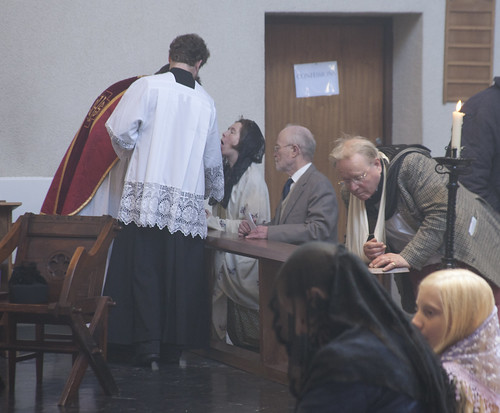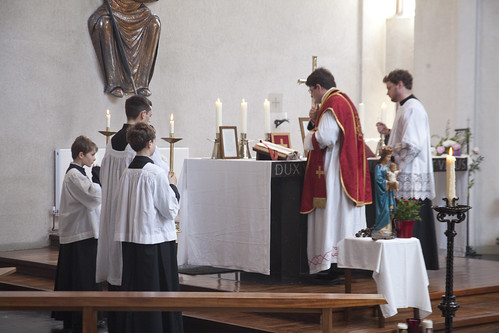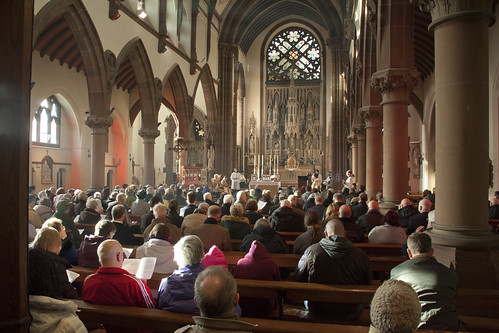Chairman's Blog
New Book: Noble Beauty, Transcendent Holiness, by Peter Kwasniewski
Noble Beauty, Transcendent Holiness
Why the Modern Age Needs the Mass of Ages
PETER KWASNIEWSKI
 Foreword by Martin Mosebach
Foreword by Martin Mosebach
I've provided a blurb for this book; here it is in full below. Buy the book here.
Peter Kwasniewski's tremendous new book is an eloquent and erudite confrontation with the very root of the liturgical debate: whether the radical de-mystifying of the Catholic liturgy has been for the good of souls. It is not a matter of personal preferences, the evolving needs of 'modern man', or even of the reverence of the celebrating priest. It is rather of the truth or falsity of the massive testimony of the liturgical tradition, which is the testimony of the Church herself, that the kind of liturgy which pleases God, softens the hearts of sinners, and raises the pious towards sancticy, is the mysterious product of centuries of development. When a functionalist liturgist rejects ceremonies and language whose meaning is not immediately clear, he rejects precisely the vehicles which can carry the full weight of the Faith, something which cannot be expressed in a common-place formula. Only something whose meaning cannot be exhaustively expounded by the liturgists of today, will have insights for the Catholics of tomorrow, and of every age.
Josep Shaw, Chairman of the Latin Mass Society, England
Buy the book here.
LMS AGM Mass with Fr Alex Stewart FSSP: photos
Fr Alex Stewart, ordained only a week, celebrated a High Mass in St James' Spanish Place in London for the LMS Annual General Meeting.
Support the work of the LMS by becoming an 'Anniversary Supporter'.
Corpus Christi and a First Holy Communion in Oxford: photos
Support the work of the LMS by becoming an 'Anniversary Supporter'.
Ordinations in Warrington: Photos
Holy Orders was conferred, and Mass celebrated, by Archbishop Malcolm McMahon OP, in St Mary's Church, Warrington. The ordinands were Alex Stewart, FSSP and Krzysztof Sanetra, FSSP. Bishop Mark Davies of Shrewsbury was in choir.
Support the work of the LMS by becoming an 'Anniversary Supporter'.
A computer game based on Plato?
I know nothing about computer games, but no doubt some of my readers do, and may be interested in this Kickstarter funding campaign to create a game based on Plato's Critias - the one about the lost island of Atlantis.
This is a fantasy 'quest', based not on the Hollywood nonsense-history of Lara Croft and company, but on the profound and intriguing myth-history of Plato's Critias. Perhaps many historians today would like to turn the more eccentric corners of their studies into a computer-game, but the creators of 'The Unwritten Critias' have the technical virtuosity actually to do this.
Juventutem Mass in London Friday 23rd
With the newly ordained Fr Alex Stewart FSSP, in St Mary Moorfields, London EC2M 7LS
7:30pm, Friday 23rd June
Support the work of the LMS by becoming an 'Anniversary Supporter'.
Trinity Sunday in Holy Trinity Hethe
The Victoria Consort under Dominic Bevan accompanied the patronal feast of Holy Trinity, Hethe, celebrated by the parish priest, Fr Paul Lester.
Readers will perceive that I don't only go to modern churches. Holy Trinity, in fact, is the oldest Catholic parish church in Oxfordshire, dating from 1839. It has some lovely stained glass, and the stunning wall decorations date from the church's centenary refurbishment; architecturally, it is very simple.
The EF is celebrated here every Sunday at 12noon; on the first and third Sundays, it is sung. Hethe is outside Bicester, not far from Junction 10 of the M40 motorway. (The address is Hardwick Road, Hethe, Nr Bicester, OX27 8AW.)
Support the work of the LMS by becoming an 'Anniversary Supporter'.
Ember Saturday of Pentecost in Holy Rood, Oxford
The southern part of Oxford is part of Portsmouth Diocese, since the Thames is the diocesan boundary: as it was in the Middle Ages. So just outside Birmingham Archdiocese, at the modern church of Holy Rood in the Abingdon Road, Fr Daniel Lloyd, Parish Priest and member of the Ordinariate of Our Lady of Walsingham, celebrated the Ember Saturday of Lent. This Mass was sponsored by the Latin Mass Society and accompanied by the Schola Abelis, Oxford's dedicated Chant schola (the Oxford Gregorian Chant Society).
I'm not going to claim that this is the style of church I would choose above all others if I was allowed to choose... no one would believe me anyway. But as a matter of fact this church was built for the Traditional Mass, and the first Masses here were celebrated facing East, as it was last Saturday. Today the EF is celebrated every Friday at 12:30pm, and it is also the place in Oxford to find the Ordinariate Use.
We had the full set of readings for the Ember Saturday, giving us a wonderful collection of texts - Scripture, collects, and chants - to deepen our appreciation of Pentecost.
It is correct to say that great church architecture is appropriate for the Mass, and helps to lift the heart and mind to God: as does great liturgical music, and also smaller things like vestments and church plate. But I rather resist the idea that some styles of architecture render a church 'unsuitable' for the Extraordinary Form. If there is room to genuflect in front of the altar, and space for the ceremonies, then it is possible to celebrate the EF, and it is always good to celebrate the EF.
Modern churches tend to have plenty of space: the problem with space comes from churches where the altar has been moved towards the nave from a historic position against the end wall. Modern churches also tend to have good acoustics: the problem for acoustics tends to come from excessive carpeting, blessedly absent from Holy Rood.
At any rate, I'd rather attend Mass in a modernist car park, which has been dedicated to Catholic worship, than in a Gothic masterpiece which has been secularised. And Holy Rood is not as bad as that by a long chalk - for the real modernist car park experience you have to go to the 'underground basilica' in Lourdes where the SSPX has celebrated Mass for pilgrims.
If the architects of that monstrosity and, perhaps, the forward-looking builders of Holy Rood, are turning in their graves at these developments, that's fine by me.
And thus the whirligig of time brings in his revenges.
Support the work of the LMS by becoming an 'Anniversary Supporter'.
Protestantism and the cult of ugliness
Reposted from June 2014. A footnote to what I write here is an interesting fact I have since learned about 'Puritan' fashions: the Roundheads and Pilgrim Fathers and so on wearing black. The contrast between Roundheads and Cavaliers in the English Civil War derived from two different inspirations: the Cavaliers took their fashions from Catholic France, the Roundheads from the Protestant Netherlands. And where had the Netherlands got it from? Spain: a natural influence because of the Spanish control over much of it. This is of course an historical irony, but even in its Catholic origin it was a statement about rejecting frivolity and licentiousness. (See this section of a Wiki article.)
-----------------------------------------------------------------------
 |
| This is both ugly and glamorous. |
Continuing our series on a Catholic approach to fashion, I interrupt the posts of Queen of Puddings with a little philosophical interlude. I promised to say something about how the Protestant attitude is different from the Catholic, something referred to (without being developed) by Tracey Rowland.
Our inveterate commenter 'Eufrosnia' wants to know if there is anything wrong with dressing in an ugly way. Of course there is.
1. Ugliness is a natural evil. (Will anyone disagree with this?)
2. To embody it is bad. (This just follows from 1)
3. To do so deliberately or through negligence is morally bad. (This just follows from 2.)
To build an ugly building is wrong, if it is done deliberately or negligently (when it can be avoided without serious inconvenience). To dress in an ugly way is worse. It evinces a lack of gratitude to God for one's own creation, a lack of respect for oneself, and a contempt of others. There are even more fundamental issues involved here, as this post will argue.
 |
| The trouble with searching for 'Grunge' is that you get the fashion-industry imitation. The real thing is a street style and far more extreme. |
Dietrich von Hildebrand noted the unfortunate tendency in some of the more rigorist Catholic circles before the Council to disparage natural goods, because they had failed to distinguish them from worldly goods. Worldly goods, like money and worldly honours, have no intrinsic value. To set one's heart on them is to set one's heart on a vanity: on nothing. Natural goods, like beauty, have intrinsic value. Beautiful things were created good by God, or if man-made, they reflect His goodness. To reject natural goods is to reject the goodness of creation and its capacity to reflect God, and lead hearts to God.
Such a rejection is characteristic of Protestantism, and this forms the background, looking at the big picture, of the crisis of fashion we are living through. The Protestants taught that at the Fall nature human became depraved, evil, and by parallel the created world falls under suspicion. The Protestant attack on religious art did not limit itself to devotional images: it included Gregorian chant. Of course it is impossible to exclude the artful use of created things to raise the heart to God completely from religious architecture and liturgy, but Anglicans, Lutherans, Calvinists and Anabaptists settled at different points on this dismal road. The Anglicans smashed the stained glass and abolished the antiphons of Vespers and Compline. The Lutherans insisted that no syllable have more than one musical note. The Calvinists got rid of the organs. All of them created white-washed churches which look like neo-classical meeting rooms instead of holy places.
The Protestant mindset had it that to contemplate a devotional image - a crucifix, say - is to contemplate something other than Christ, to give to the image what we owe to Christ. It is idolatry. By extension, to contemplate any beautiful thing is to focus our attention away from God, onto something else. Something, in fact, which is worthless or even evil, because all created things have been tainted by the Fall.
The Catholic attitude is that by contemplating the crucifix we look beyond it, and raise our minds and hearts to the real Christ. By extension, any beautiful thing can raise the heart to God. Religious and devotional art, of course, expresses all sorts of specific truths, but all art which aims at beauty expresses the Catholic doctrine that God's creation is good even after the Fall. It lost Grace, and was wounded, by the Fall, but it did not lose all its value.
On clothing in particular, the more extreme Protestants adopted a sort of uniform of black and white, without colour or decoration, and with the simplest form. In fact this can look extremely elegant, but the logic of the position would suggest it should not please the eye at all.
Just as devotional images were thought to take the mind away from what they represented, it is easy to develop the idea that clothes distract one from the real person wearing them. The real thing, devotionally, is supposed to be something entirely spiritual: as if the Incarnation had never taken place. Similarly, the real thing in any material thing, including humans, might be thought to be something beneath and separate from the outward appearance. You can see this idea developing in the Enlightenment, in the writings of philosophers imbued with Protestant culture. This is essentially the Heresy of Formlessness which Martin Mosebach talks about, and I make no apology for mentioning this book again. Anyone interested in these issues should read it.
Applied to the liturgy you get the Novus Ordo. Applied to clothing you get grunge.
In reality, we are incarnated in our bodies, and we express ourselves in our clothes. Garments do not hide us: they clothe us.
FSSP Ordinations in Warringon
Next weekend two seminarians of the Priestly Fraternity of St Peter (FSSP) will be ordained to the priesthood in their impressive church of St Mary's, Warrington by Archbishop McMahon. Everyone is welcome to this historic events: the first ordinations in England using the traditional rites since the liturgical reform.
Support the work of the LMS by becoming an 'Anniversary Supporter'.

